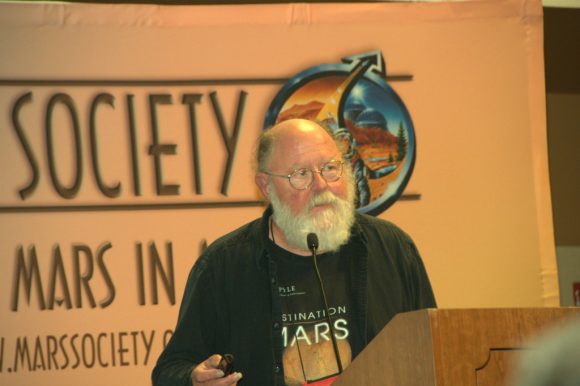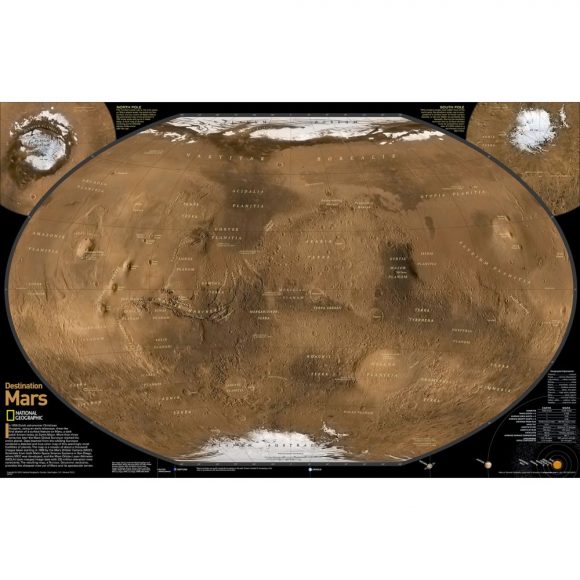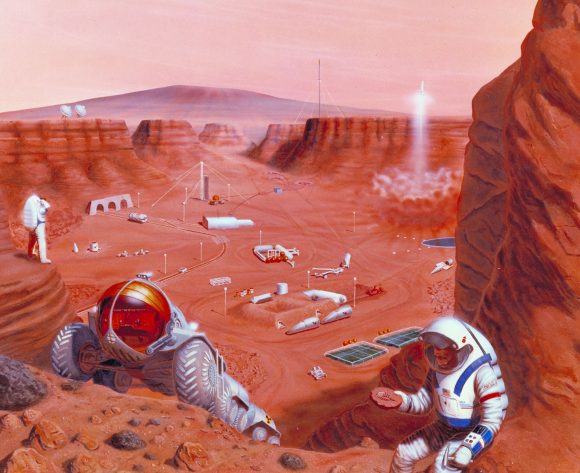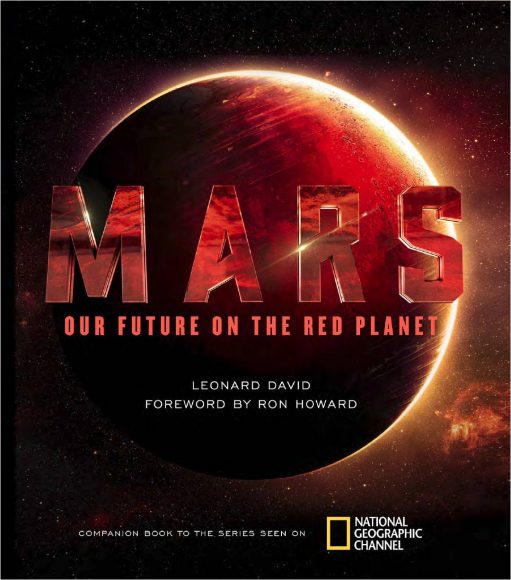What is it going to take to really get humans to Mars? A new television series and a companion book take a detailed and hard look at the future of Mars exploration. The six-part documentary series on the National Geographic Channel and the book by veteran, award-winning space journalist Leonard David are both titled, “Mars: Our Future on the Red Planet.”
The TV series debuts on November 14, 2016 and was produced by Academy Award-winning filmmaker Ron Howard (Apollo 13) and NASA scientist Brian Grazer. It combines interviews with some of the prominent ‘movers and shakers’ in the space community along with a scripted drama that portrays a human mission to Mars in the year 2033. Together, the show “tells the story of how we will one day call the Red Planet home through groundbreaking research and innovation.”
Watch the trailer:
Leonard David’s thoroughly researched book contains a wealth of information on the technological and sociological hurdles that need to be surmounted to make humans on Mars a reality, as well as revealing what work is currently being done on the road to the Red Planet. The books is large format, filled with stunning, full-color images throughout that provide a feast for the eye, including actual images from our spacecraft as well as illustrations of what future missions might entail.
While the book includes some portrayals of the television series’ drama of the crew of the Daedalus mission as they land on Mars and set up the first human base, the real drama comes from David’s interviews with real-life experts, the men and women who are fervently working towards the day an actual human mission goes to Mars.
I had the chance to talk with David about his new book, and asked what it was like to write a book in conjunction with a television series.

“It was a really interesting experience,” he said, “and we had a close-knit team that had telecons every week to try and synchronize the themes we were using. There were a few topics I wanted to make sure I was able to include, and there were several themes that the whole team wanted to make sure was included in both the book and the show.”
For example, the imagery in the book and the premise of the show reflect that a mission to Mars is likely going to be a global endeavor. “I wanted to make sure to emphasize this will not be just a US or NASA enterprise, and also that a lot of other countries are exploring Mars with spacecraft right now,” David said.
And so, the images in the book come from multi-national sources, and several are pictures I had never seen before, including the latest images from spacecraft, unique illustrations, and distinctive maps of potential human landing sites on Mars that are almost impossible to stop looking at.

David said that with the book, he didn’t want to take a stand on all the issues but combine as much information as possible to make it all available for people to think about.
He also said he wanted to portray the true realities of a human expedition to Mars.
“I wanted to make sure people understand that it’s not just throwing a bunch of tin cans on the surface of Mars and then jamming people in them,” he said. “There are so many other issues: sociological issues, there are cultural issues, and there are ethics issues particularly on the topic of possibly terraforming Mars. I just wanted to write a book that I haven’t already read, and I hit on themes that I don’t recall other books getting to.”
For example, David interviews Frank White, author of the seminal book “The Overview Effect,” and that title is now used as an evocative term to explain how seeing Earth from space has changed the human perspective and experience. But David asks White to consider what The Overview Effect will mean for human Martians.
“The Martians will soon develop their own culture and seem like true ‘aliens’ to Earthlings,” envisions White, leading ultimately to a “declaration of independence” from Earth by Mars.
Similarly, David’s discussions with Nick Kanas, professor emeritus in the department of psychiatry at the University of California, San Francisco, covers what Kanas calls “Earth out of view,” which means that since Earth is so far away, any future human Martians will have to solve their own problems. Therefore, any physical or mental issues that arise will have to be dealt with locally.
It could highlight a sense of isolation, being distant and away from everything, [Kanas adds]. “It’s a different sort of state. Whether that will produce depression, or psychosis, or extreme homesickness… I don’t know. We have a lot of questions that Mars is going to raise, and we don’t have the answers.”
And there are other realities that need to be considered.
“There will be death,” David said. “Mars is out to kill you to begin with, and there will be accidents and people will likely lose their life in some way. It’s going to call upon the pioneering spirit, and it will challenge us not only technologically, but psychologically and physiologically.”
David looks at the technology that will be required: the potential propulsion systems, how to ramp up current entry, descent and landing (EDL) systems for larger human-sized payloads, and the imperative of using what’s called In Situ Resource Utilization (ISRU).

“If we are going to try to avoid having these missions be just flags and footprints like the Apollo missions, it’s going to require living off the land on Mars,” David said.
Again, the experts David interviewed – called “The Heroes” in the book — provide an incredible depth of insight on all the issues facing a human mission to Mars. The Heroes include people such as historian John Logsdon, policy experts like Marcia Smith, entrepreneurs and innovators like Elon Musk, Mars engineers like JPL’s Rob Manning, planetary scientists such as NASA’s Chris McKay and Planetary Protection Officer Catherine Conley, then astronauts like Stanley Love who have already been on the front lines of long duration spaceflight and veteran Buzz Aldrin whose lifetime of experiences provide a unique perspective on human exploration. Reading the words of these experts was perhaps my favorite part of the book (besides those intriguing maps!)
With NASA and other space agencies now embracing Mars as the ultimate human destination, David said the time is now ripe for looking at all the issues that lie ahead on the path to Mars.
“This is a unique time,” he said. “I believe we are in a period that I call ‘now history.’ Never before in our history have we had the potential for the technology, communications and all the other things we need to go off the planet; we’ve never been here before. I think we have an opportunity to create this ‘now history,’ and what we do here and now is going to be a flagship for the future as far as our ability to not only go to Mars, but to go beyond to other planets as well.”
David said he hadn’t yet seen all the footage from the television series, but he was impressed with what he has watched so far. “Ron Howard is pretty good at this stuff, and so the quality is definitely there.” David also indicated there is a bit of a surprise ending to the show, so make sure to stay tuned.
Leonard David is a long-time contributor to Space.com and he writes a column for that site called Space Insider. He is also the coauthor of Buzz Aldrin’s book, “Mission to Mars.” You can find more articles by David at his website, Inside Outer Space.
More information on the book and how to purchase it can be found at the Nat Geo website, or at Amazon, and additional information on the television series can be found here.


